What Are The Best Watercolor Brush Pens? [Top 8 Reviewed!]
Posted by ColorIt Support on
Wanna explore the possibilities of watercolor brush pens but don’t know where to start? Don’t worry, we got you covered!
In this comprehensive article, we review the top 8 watercolor brush pens in the market today. We did all kinds of crazy tests on these pens so you can choose the best one that fits your needs.
If you’re ready to have fun with watercolor brush pens, let’s dive right in!
The Best Watercolor Brush Pens And Markers At A Glance
Why We Love Watercolor Brush Pens
What’s not to love about watercolor brush pens?
As the name suggests, this art medium combines the versatility of watercolor with the simplicity of a pen. With watercolor brush pens, you can do all sorts of beautiful designs like illustrations, color washes, splatter effects and dreamy blends without the mess. You can even use them on adult coloring books. If you want to have the best of both worlds, this is the art medium for you!

With watercolor brush pens, you don’t have to set up lots of tubes or clean multiple brushes. All you have to do, really, is pop their caps open, dip them in a bit of water (if you like!) and color away.
That being said, it’s important to choose the best set of watercolor brush pens out there. Not all brands are created equal, so we took it upon ourselves to put the best watercolor brush pens to the test.
How We Did Our Review + Criteria
Reviewing art supplies like markers, colored pencils and coloring books for you guys has always been a fun experience for us here at ColorIt.
Here’s how we did our review, plus the criteria that we used in rating these brush pens:
First, the cursory internet search.
We already had a few brush pens in mind, but we also wanted to know if other enthusiasts shared the same thoughts. Thus we scoured the interwebs for the best watercolor brush pens.
We looked at both high-end brands and affordable fan favorites. Finally, we ended up with the top 8. We ordered them (oh yes, these came out of pocket) and waited with bated breath for our packages to arrive.
Next, the actual review and testing
Aside from noting the physical attributes of each brush pen, we also used the following criteria to review them:

- Color Selection - how much variety can you get in one set? Does the set have a specific color palette? Do the colors on the cap actually match with the ink of pigment?
- Vibrance - how do the colors appear on the page? How saturated or juicy are the brushes? Is there a huge difference between wet and dry strokes? How long do you dip them in water to dilute the colors?
- Brush quality - is it a felt brush tip or a “real” brush tip? What kind of strokes are the brushes capable of? Can you use them for calligraphy or brush lettering? Do they fray easily?
- Dissolvability - does the ink or pigment lift easily from the paper? Do the colors feather around the edges? Can you do washes?
- Blendability - how well do they blend using the wet-on-dry and wet-on-wet techniques?
- Price-performance ratio - how well do they perform, considering their price point? Does expensive mean better or does price not matter at all?
For your reference, we used ColorIt’s Watercolor Paper pad all throughout our testing and review.
Okay, now that we’ve got all that down pat, here’s our review of the best watercolor brush pens in the market today:
The Best Bang For Your Buck: ColorIt (24 Color Set)
Fast facts:
- Tip: Single
- Brush type: Bristle
- Ink: Dye-based
- Self-cleaning: Yes
- Refillable: Yes
Of course, we had to take this chance to see how our own ColorIt Watercolor Brush Pens fared against the other brands out there. As always, we wore our objective caps on and tried to see our own product from the consumer’s point of view.
Here's what we observed:
First Impressions
The first thing that caught our attention with this set is definitely its nifty travel-friendly case. Among all the brush pens that we reviewed, only ColorIt came with a padded traveling case like this. Each pen has its own designated holder inside the case. This makes storage safe, convenient and organized.
The set is made up of 24 unique and vibrant shades; there is an equal distribution of primary, secondary and tertiary colors. You can also find some earthy greens, deep reds, and super light pinks.

The pen itself is nice and light in the hand. You can find the color name and code printed on the barrel, so it’s easier to organize and swatch. The caps are clear, so they show the brushes and their colors. They also come with clips that prevent them from rolling off surfaces.
Another unique thing about these pens? They’re refillable! You can twist the bottom of the pen open and drop the ink refills in without a hitch. Not only does this feature save you some serious bucks, but this also means there’s less trash in the landfills--- which is awesome. On top of that, you can enjoy your pens for a longer time. You’re basically hitting not just two, but three birds with one stone.
Performance

Taking these pens out for a spin was a whole lot of fun. They feel great in the hand and they’re also very juicy. Each brush stroke yields a lot of vibrant ink. The colors stay consistent on the page, too.
The real brush tip has the right amount of give, so it’s neither too soft nor too rigid. You can use them for both painting and calligraphy without putting a lot of pressure on your fingers or wrist.
Brush lettering enthusiasts will love the versatility of the nib--- it’s capable of creating both fine and bold strokes. While the pens work great as is, they’re even better when used with water. It makes the ink move more fluidly across your paper. Blending is also a breeze. You can get really smooth transitions as well as solid layers.
While the pens work great as is, they’re even better when used with water. It makes the ink move more fluidly across your paper. Blending is also a breeze. You can get really smooth transitions as well as solid layers.
You can lift ColorIt’s ink moderately off the page, so you can definitely use it for color washes, backdrops and the like.
A lot of people have given us feedback that they find the 24 colors on this set to be a bit limited. While we might think about expanding the palette in the future, we also would like to note that these pens are super blendable.
You can actually expand your palette by combining the colors that you have on hand. We especially love blending colors by touching two brush pen tips together--- it’s great for smooth gradient effects in both coloring and lettering.
Our Verdict

With its padded traveling case, refillable feature, and high-quality pens, it’s pretty clear that ColorIt’s Watercolor Brush Pens give you the best bang for your buck. These brush pens may still be relatively new, but they were pretty much created with the coloring enthusiast in mind. It’s great for both beginners and advanced colorists alike.
For Calligraphers and Brush Lettering Enthusiasts: Tombow Dual Brush Pen (10 Piece Set)
Fast facts:
- Tip: Double (Brush and Fine Point)
- Brush type: Felt
- Ink: Dye-based
- Self-cleaning: Yes
Tombow is one of the most popular water-based brush pens out there. They’re so popular that we even included them in our previous review about the best markers for adult coloring books. How will they fare against other watercolor brush pens this time? Find out below!
First Impressions

For this review, we used the same Brights set that we got last time. The set is comprised of 9 bright shades and one colorless blender. The variety in this set is pretty limited, but we liked the colors included in the pack, nonetheless.
Tombow brush pens are longer and more slender than most brushes on this list. They come with two nibs: one is a felt brush, while the other is a fine point. You can find the color code printed on the pen’s body. The cap also indicates the color of the pen.
Speaking of caps, we especially like how Tombo’s caps fit into each other when one end of the brush pen is in use. It’s a small but thoughtful feature because let’s face it--- losing pen caps is such a hassle! Nobody likes to lose pen caps!
Performance

As far as performance goes, the Tombow brush pens did not disappoint. They may not be the best for doing adult coloring books (they tend to damage the pages), but they really shine when used on thick watercolor paper.
Its colors appear solid when blending and layering using the wet-on-dry technique. We love how you can build a lot of layers with one pen. The colors stay quite vibrant too, even if you dilute them.
Tombow’s brush tip falls on the rigid side, so it’s really best for calligraphy and brush lettering. You don’t need to put a lot of stress on your fingers and you can control the brush easily to produce both thin and thick strokes.  Since Tombow uses a felt brush tip, you might also want to be careful about fraying. From experience, felt or foam tips tend to fray faster than bristle tips and that really affects the quality of the pens.
Since Tombow uses a felt brush tip, you might also want to be careful about fraying. From experience, felt or foam tips tend to fray faster than bristle tips and that really affects the quality of the pens.
Now, for the ink, dries relatively faster than the other pens on this list. You can’t lift them off the page much once dry, so if you like washes and backdrops, you might want to check out the more fluid pens on this list.
The colorless blender is a great addition to the set though. It helps you achieve smooth color transitions and you can also use it to correct small mistakes.
Our Verdict
Overall, it’s pretty safe to say that calligraphy and brush lettering are Tombow’s strongest suits. The brush is capable of making both thick and thin strokes and its colors are pretty consistent, too. They’re not the best for washes or illustrations, and each pack is quite limited to only 9 colors. Nonetheless, if you love brush lettering and typography, you’ll like this one.
For Watercolor Painters: Akashiya Sai Watercolor Brush Pen (20 Color Set)
Fast facts:
- Tip: Single
- Brush type: Bristle
- Ink: Dye-based
- Self-cleaning: Yes
We heard a lot of good things about the Akashiya Sai Watercolor Brush Pens and we were quite pleased to find that they did not disappoint. Here’s our review of this fan favorite:
First Impressions
At first glance, the Akashiya Sai honestly looks just like any other brush pen set out there. Its packaging was rather generic. It set itself has an interesting selection of colors though.

There’s an abundance of bright, basic shades. It also has a couple of earthy and rich greens and reds. The pens are slender and have a shiny finish. They're lighter and thinner than the "marker" type of brushes featured on this list, too.
The colors are indicated on the bottom of each pen. The caps are clear and come with a clip that also prevents the pens from rolling off the table. You can't find color codes or names on the barrel, so please swatch and label these accordingly to help you be more organized.
Performance

We encountered a teeny problem with these brush pens: a couple of them had stray strands out of the box. We were glad that we plucked them out because it was only smooth sailing from there.
Like ColorIt, Sai’s brush strikes a balance between softness and hardness, so you don't need to put a lot of pressure on your hand to control the pen.
We love their juiciness--- none of them were dry and they glided smoothly over the paper during the first run. We didn’t experience any scratchy brush strokes even when we didn’t dilute them in water. Brush lettering enthusiasts and calligraphers will definitely like its consistency, too. Layering is no problem. Again, it came as a surprise that you can layer so well with these pens, even when you’re doing wet-to-dry. Blending was likewise a treat--- you can get really smooth color transitions whether you’re using the brush pens as is or diluting them with a bit of water.
Layering is no problem. Again, it came as a surprise that you can layer so well with these pens, even when you’re doing wet-to-dry. Blending was likewise a treat--- you can get really smooth color transitions whether you’re using the brush pens as is or diluting them with a bit of water.
Our favorite thing about these pens in the quality of the ink. It’s quite rich and saturated and it lifts smoothly off the page. One stroke yields so much color and you can do so many techniques and effects with it, including washes and ombres.
We read some reviews that they may run out faster than most though. We didn’t experience this during testing but if they really do, it’s a shame that they aren’t refillable.
Our Verdict

The Akashiya Sai pens are quite popular among watercolor brush pen enthusiasts and for good reason. Being one of the pioneers of watercolor brushes, you can really tell that they’re made with quality in mind. This 20-piece set might not have the widest selection of colors out there, but the colors that you do get are pretty unique.
As we mentioned earlier, a little goes a long way when using these pens. We liked that one stroke already yields a lot of colors. You can definitely use it for painting, illustration, and calligraphy.
For Those Who Love Variety: Arteza (48 piece set)
Fast facts:
- Tip: Single
- Brush type: Bristle
- Ink: Dye-based
- Self-cleaning: Yes
Arteza is a name that you often hear when talking about watercolor brush pens so we took them out for a spin, too. Here’s what we found out:
First Impressions
Perhaps Arteza’s biggest advantage is its color selection. The set that we reviewed came with 48 brush pens and an accompanying water brush--- the most varied on this list. That got us really excited.

The set had a wide array of neutrals and browns which is something that you don’t find every day. Like most brush pens, Arteza’s pens are light and slender, but with a matte finish.
There are no color codes on the barrel; the colors, however, are indicated at the very bottom of each pen. As always, don’t forget to swatch and label before using!
Performance

To be honest, Arteza’s brushes took a bit to get used to, especially if you’re doing calligraphy. Its bristle brush tip itself is longer than most and it’s quite softer, too, so you’d need a bit of control to get the upstrokes and downstrokes right.
Some brushes were also a bit dry out of the box, while others had frayed or stray bristles.
Doing the wet-on-dry technique can be a bit patchy as the pens are not as juicy as, say, ColorIt or Ecoline (reviewed below). On the upside, they dry quite fast and build the colors well without saturating the paper much. This makes the Arteza brush pens great for impressionist-style paintings.
as, say, ColorIt or Ecoline (reviewed below). On the upside, they dry quite fast and build the colors well without saturating the paper much. This makes the Arteza brush pens great for impressionist-style paintings.
The brush, while tricky for lettering, is capable of painting small, intricate details. Although they feather quite a bit when diluted, but they blend well enough.
Arteza’s ink isn’t as dissolvable as the rest of the brushes in this list. You can’t lift them much once you lay them on the paper. The drier consistency of the ink makes them great for painting, but for washes, you might wanna stick to the other brushes in this list.
Our Verdict
Overall, Arteza is best if you love doing impressionist-style paintings. It’s got a really wide selection of colors, including neutrals and browns, which is great if you like painting sceneries or still life. The ink stays well on the page and the longer brushes are great for detailing. If you love doing calligraphy or watercolor washes, however, we recommend checking out the other markers on this list.
For Covering Large Areas: Spectrum Noir (12 piece set)
Fast facts:
- Tip: Double (Brush and Fine)
- Brush type: Felt
- Ink: Dye-based
- Self-cleaning: Yes
Spectrum Noir is one of the high-end watercolor brush pens on this list. Actually, they’re classified as markers, not pens. A set of 12 clocks in at around $20, so they’re relatively pricey. Does a higher price tag mean higher quality, too? Here’s what we found out during our review:
First Impressions
The set comes in a cardboard box with a plastic tray to keep the markers in place. The markers themselves are hexagonal in shape and are obviously much thicker than their pen counterparts. The unconventional shape isn’t the comfiest one in the bunch. Some members of our editorial testing team did not like it at all.

The chunky markers come with a matte finish. While you can’t find the color code on the barrel, each marker’s color is indicated on the top of the cap.
These Spectrum Noir markers are dual-tipped--- one end has a brush nib while the other has a super-fine nib for teeny, tiny details.
A set of 12 isn’t extensive at all, but Spectrum Noir made up for it with a great selection of primary, secondary and tertiary colors. Don’t expect to find neutrals or grays in this set, though.
Performance

Before we go on about what we loved about these markers, let’s get the negatives out of the way first.
For some reason, the set that we received had a couple of frayed brush nibs out of the box. We don’t know if this was a factory defect or if this is the natural state of the markers. Either way, this made our experience less than satisfactory. This was our biggest gripe about the set that we received.

Now, since they’re markers, the Spectrum Noir’s felt brush nibs are also way thicker than the other brands on the list. While not the best for intricate calligraphy, you can definitely use them if you need bold strokes or if you need to cover large areas.
On the upside, the Spectrum Noir watercolor markers delivered--- as much as they can with frayed ends, at least. They’re not the juiciest markers out there, so don’t expect them to be super fluid, but the quality of their ink is pretty impressive.
 For a dye-based marker, their colors look like actual watercolor pigments: subdued, a bit on the pastel side and slightly chalky when dry.
For a dye-based marker, their colors look like actual watercolor pigments: subdued, a bit on the pastel side and slightly chalky when dry.
They lift moderately off the page. They’re not as saturated as ColorIt or Akashiya, but they do get the most creative jobs done.
We just really wish the brush tips were in better shape. If this is their original state (we hope not!), then you won’t find us singing a lot of praises for Spectrum Noir any time soon.
Our Verdict
There were a lot of things we didn’t like about Spectrum Noir. The brush nibs were frayed, the angular shape wasn’t the most ergonomic and the color palette is pretty limited. It’s saving grace was definitely the quality of its ink. It resembled traditional watercolors so well and they gave off a subdued, pastel vibe.
It’s great if you need to cover large areas or if you’re a big fan of authentic watercolor effects. We just wished we had better brush tips, though.
If You Love Juicy Brush Pens: Ecoline (15 piece set)
Fast facts:
- Tip: Single
- Brush type: Felt
- Ink: Dye-based
- Self-cleaning: Yes
Lots of people seem to love the Ecoline Watercolor Markers, so we had to test them out for ourselves. Here's what we found out:
First Impressions

Like Spectrum Noir and Winsor and Newton, Ecoline is a watercolor brush marker. This means that it's chunkier and thicker than traditional watercolor brush pens. It's got a shiny finish and fits quite well in the hand.
The marker sports a single felt nib. You'll also find the color code and name on each marker's barrel.
The color selection is made up mostly of basic colors that will appeal to beginners. Here you can find some primary and secondary colors with a couple of earthy tones.
Performance

If we had to pick one word to describe the Ecoline markers, it would be "juicy". These markers were super fluid--- if you like painting, you can use them to create smooth blends without having to dip them in a lot of water. Each stroke yields a lot of ink, making the Ecoline markers ideal for washes and delicate backgrounds. This quality plays well with the vibrancy of the markers.
The pigment lifts quite easily off the page, which again, is good news if you like washes and soft, subdued effects. 
Since its a marker, expect the Ecoline's brush nib to produce thicker strokes. They're not the best choice if you want to add calligraphy to your bullet journal spreads, but you can definitely use them for bigger projects like cards and illustrations. Using them in brush lettering, we noticed that the colors were lighter on the upstroke and darker on the downstroke.
While we love a good juicy pen, we also have to note that the consistency of Ecoline's ink can be on the runny side. They take a bit to dry, so be careful not to smudge them when in use. They also feather quite a bit and can potentially damage thin, low-GSM paper, so make sure to use only thick, watercolor paper with these markers.
Our Verdict
It’s pretty safe to say that Ecoline had one of the juiciest brushes in this list. They’re great for a number of things like washes and backgrounds. Beginners will also like the thicker barrel while they work on their dexterity and control. The ink can be a bit runny, though, so be mindful of that when taking these markers out for a spin.
For The Professional Artist: Winsor and Newton (6 Piece Set)
Fast Facts:
- Tip: Double (Brush and fine point)
- Brush type: Felt
- Ink: Pigment-based
- Self-cleaning: Yes
Here's another high-end set of watercolor markers. Will they blow everyone else out of the water? Here's what we think about Winsor and Newton's Watercolor Markers:
First Impressions
Winsor and Newton's Watercolor Brush Markers certainly know how to make a good first impression. This set, albeit limited, comes in a fancy tin box that gives off serious artsy vibes. It's also quite portable and easy to store.

The marker set comes with only six markers--- you've got all your primary colors, two secondary colors and a single black marker.
The barrel is, as expected, thicker than that of a regular brush pen. The Winsor and Newton marker comes with two nibs: one is the brush nib, while the other is a fine point nib. You can distinguish one nib from the other using the caps: pointy cap means fine point nib, while the flat cap covers the brush end.
Performance

What sets these markers apart from all the others in this list is the fact that they’re pigment-based instead of dye-based. This means that its ink is made up of grounded watercolor pigments suspended in fluid. This quality also makes them lightfast and fade-proof.
That being said, these markers are best for professional artists who want their works to last for a long time or for those who are looking to upgrade their watercolor game. You need a bit of skill to fully appreciate this medium. The ink closely resembles traditional watercolor, so it’s not as saturated or vibrant as the rest of the markers or pens on this list. If you're used to dye-based medium, you might find the colors of Winsor and Newton to be "less" vibrant, pale or even patchy.
The ink closely resembles traditional watercolor, so it’s not as saturated or vibrant as the rest of the markers or pens on this list. If you're used to dye-based medium, you might find the colors of Winsor and Newton to be "less" vibrant, pale or even patchy.
There's nothing wrong with them, however. That's really just how they're supposed to look. It may take a bit to get used to, but if you’re an advanced watercolor enthusiast, you’ll surely like using these.
The markers glide quite smoothly on the page. You can move the pigments around with a bit of water, but they’re not as dissolvable or saturated as ColorIt or Akashiya.
Unlike Spectrum Noir, the felt brush nibs of this set were nice and sharp, so we were able to do calligraphy and brush lettering without a hitch. The colors blend and layer quite easily, too, so you can use these for illustrations and renderings as well.
Our Verdict
The Winsor and Newton Watercolor Brush Markers are best for intermediate coloring enthusiasts who want to take their game coloring up a notch. The light-fast ink is ideal for professionals and artists who want their work to last for a long time. Some beginners may find the selection quite limited and the colors to be not so vibrant. But if you know how to take advantage of the few colors on the palette and their quality, you’ll do just fine.
If You Love Super Soft Brush Tips: Zig Fude Real Brush Pens (36 Piece Set)
Fast Facts:
- Tip: Single
- Brush type: Bristle
- Ink: Dye-based
- Self-cleaning: Yes
Zig is another popular watercolor brush pen brand. How did they fare against the competitors? Here’s what we thought:
First Impressions
With 36 pens, the Zig Fude Real Brush Pen set is one of the bigger sets in this list. It's got a really nice selection of earth colors and neutrals, which isn't something you'd find often.

They're classified according to color out of the box. The Zig brush pens are shorter than most and have a matte finish, making them just the right size for a pen.
On the body, you'll see the color number and color name. The colors are also indicated at the bottom of each pen.
Performance

The Zig pens’ brush tips are much softer and more pliant than the others. You really need to have a lot of control when using them for stuff like calligraphy. If you’re used to more rigid pens like the Tombow, this might be a bit of a challenge.
Some brushes were a bit dry from out of the box, too, so make sure to dip them in water before use. Once they’re wet, the ink will flow out more smoothly.
What we liked about these pens is that you can build a lot of layers. They’re also  quite blendable once you dip them in a bit of water. As far as dissolvability goes, it’s pretty average. You can’t lift the ink much once you’ve laid down your strokes on paper.
quite blendable once you dip them in a bit of water. As far as dissolvability goes, it’s pretty average. You can’t lift the ink much once you’ve laid down your strokes on paper.
We tried rubbing one brush tip with another to blend but found that it’s not very effective with this pen. Our in-house artists also thought that it’s not the best for creating intricate details in impressionist-style illustrations, but they’re pretty okay if you want to go for something more cartoony.
Our Verdict
To be honest, our first impression of the Zig Fude pens was quite bumpy. The pens were too soft and some of the brushes yielded dry and patchy strokes. However, after learning how to use them (clue: dip them in a bit of water before using!), we found out that they had a lot of strengths. They build colors quite well and are great in blending. While they’re not great for small intricate details, you can use them to create more defined illustrations.
The Final Verdict
Taking these watercolor brush pens and markers was pretty fun! All things considered, we think that ColorIt checked all the right boxes. The quality of both ink and brush were top-notch. Being refillable truly gave it an edge against the others, too, while its traveling case was a huge bonus. It’s got the best price-performance ratio out of all of the pens on the list.
Right on its heels for overall performance and quality is Akashiya Sai. We loved saturation, vibrancy, and versatility of these pens.
The third overall spot is a close fight between Arteza and Ecoline, but we have to give plus points for variety to the former.
Which was your favorite watercolor brush pen or marker from this bunch? Which one do you want to try first? Let us know in the comments below!
If you found this post helpful, don’t hesitate to share it to your fellow watercolor brush enthusiasts!
Share this post
1 comment






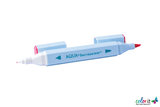











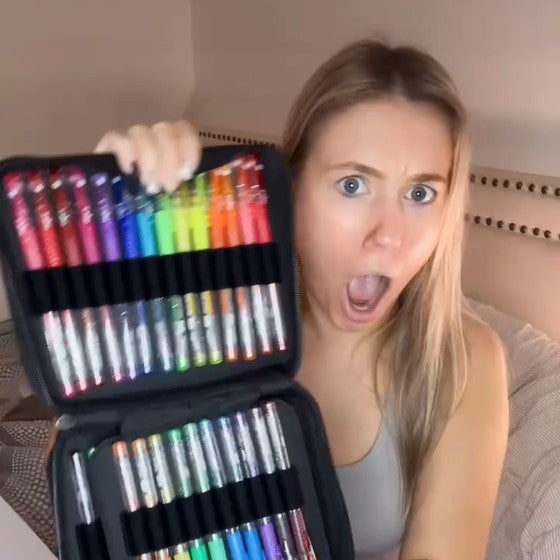
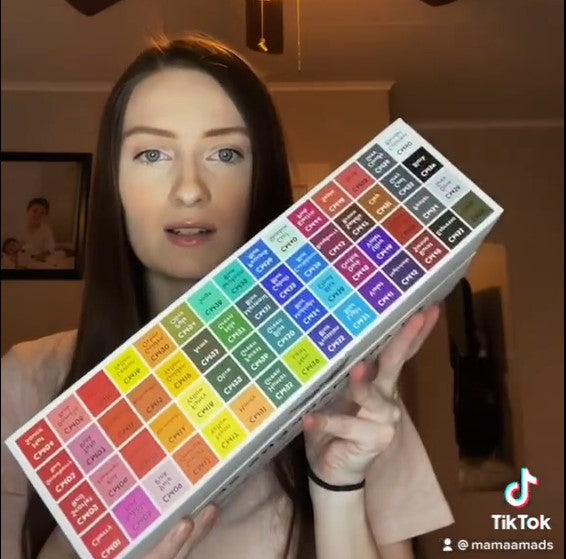
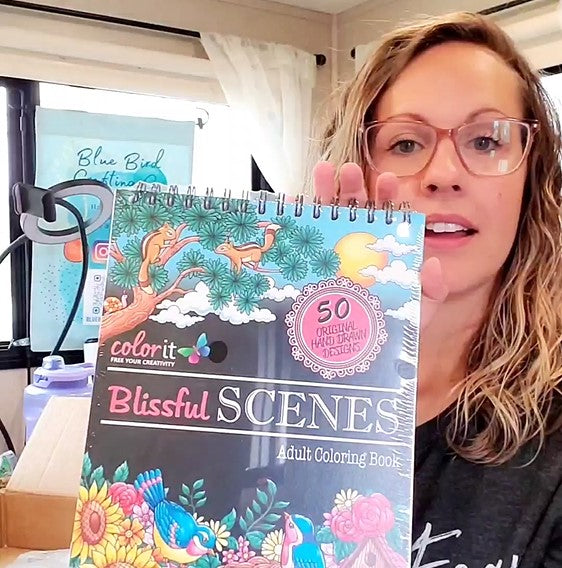
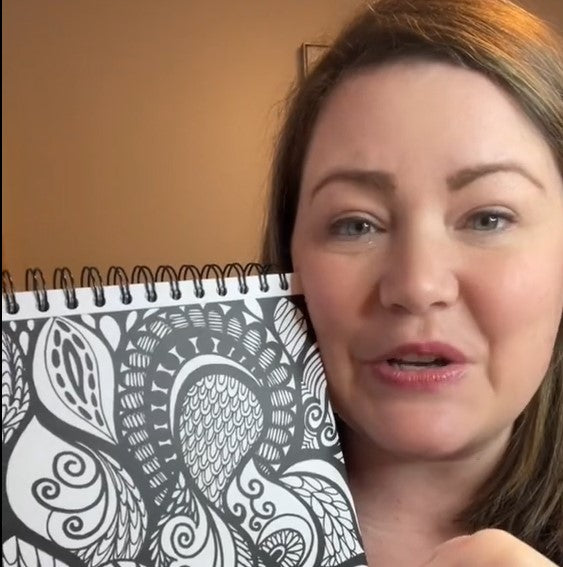



This was a very thorough and, therefore, helpful review. Thank you for the time and care you put into it.